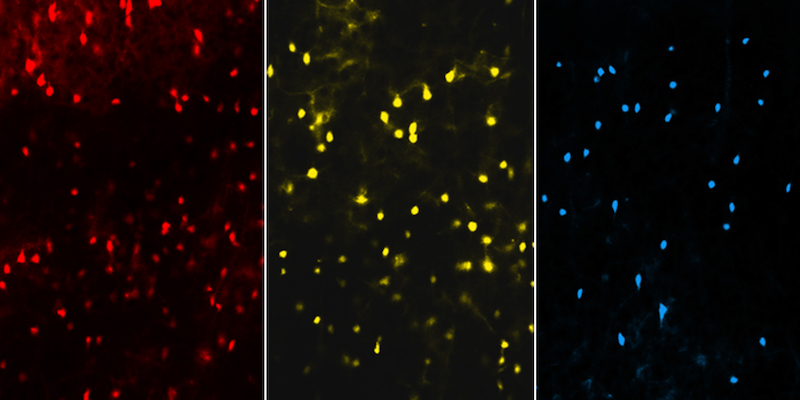CMU Neuroscientists Lay Groundwork for Identifying the Algorithm Behind Information Processing in the Neocortex

Neuroscientists at Carnegie Mellon University have identified principles for information processing in the neocortex, an evolutionarily expanded area of the brain critical for cognition. The study is one of most elaborate of its type, and lays the groundwork for understanding the algorithm neurons use to transform information during learning. The research also could further the study of disorders caused by deficits in cortical processing, like Alzheimer’s disease, autism and epilepsy. The results are published in the journal Cerebral Cortex.
The neocortex is a modular and multifunctional area of the brain. It is responsible for a wide variety of functions including decision making and memory, and auditory, tactile and visual processing. However, researchers do not know how the neocortex transforms information as it travels through the structure’s many layers.
“Anytime you pass information through a field of neurons, neural circuits perform calculations. In the case of the neocortex, we don’t know what algorithm they’re using,” said Alison Barth, professor of biological sciences and interim director of the Carnegie Mellon’s BrainHub neuroscience initiative. “Knowing that algorithm is critical to understanding the role the neocortex plays in many vital functions.”
The neocortex is very complex. It has six layers, and each of those layers has millions of neurons. Each of these neurons can be one of more than 20 different cell types. The first step in understanding how all of these different parts work to process information is to find out how each cell type in each layer reacts to the same stimulus.
To do this, researchers in Barth’s lab, including Nicholas J. Audette, Joanna Urban-Ciecko and Megumi Matsuhita, genetically isolated a sensory input to the neocortex, then carefully mapped it as it traveled across different layers and cell types. They then recorded individual neurons’ reactions to the input to see how the inputs changed to outputs as information moved through the brain.
They found that information could be split into different pathways, allowing it to be processed simultaneously in different parts of the neocortex. Information also was passed along much more slowly in the superficial layers of the neocortex, indicating that the brain is allowing more time for the input to be processed. The deeper layers moved information along in a quicker fashion, but were less likely to change the information.
Additionally, they found that each cell type had a characteristic response to the input. It had previously been thought that responses would vary on a cell-to-cell basis even within the same cell type.
“We took each cell and asked it ‘what’s your job?’,” said Barth. “We found out that one input was causing multiple cells to have different conversations all at the same time. Understanding how these reactions are organized will allow us to study what happens when the reactions are misorganized in diseases and cognitive disorders.”
The findings could also be used to help inform the engineering of computer circuits. The brain can perform calculations that can be mimicked by computers, but computers need exponentially more size and power to perform the algorithms the brain forms. Understanding the general principles of information processing in the brain will help computer scientists and engineers as the create the next generation of circuits.
The research was funded by the National Institutes of Health (DA0171099, NS088958), the McKnight Foundation and the Carnegie Foundation.
As the birthplace of artificial intelligence and cognitive psychology, Carnegie Mellon has been a leader in the study of brain and behavior for more than 50 years. The university has created some of the first cognitive tutors, helped to develop the Jeopardy-winning Watson, founded a groundbreaking doctoral program in neural computation, and completed cutting-edge work in understanding the genetics of autism. The university launched its BrainHub initiative in 2014 to bring together CMU’s strengths in biology, computer science, psychology, statistics and engineering to study how the structure and activity of the brain give rise to complex behaviors, and to develop new technologies that advance and build upon this research.
By: Jocelyn Duffy, jhduffy@andrew.cmu.edu, 412-268-9982